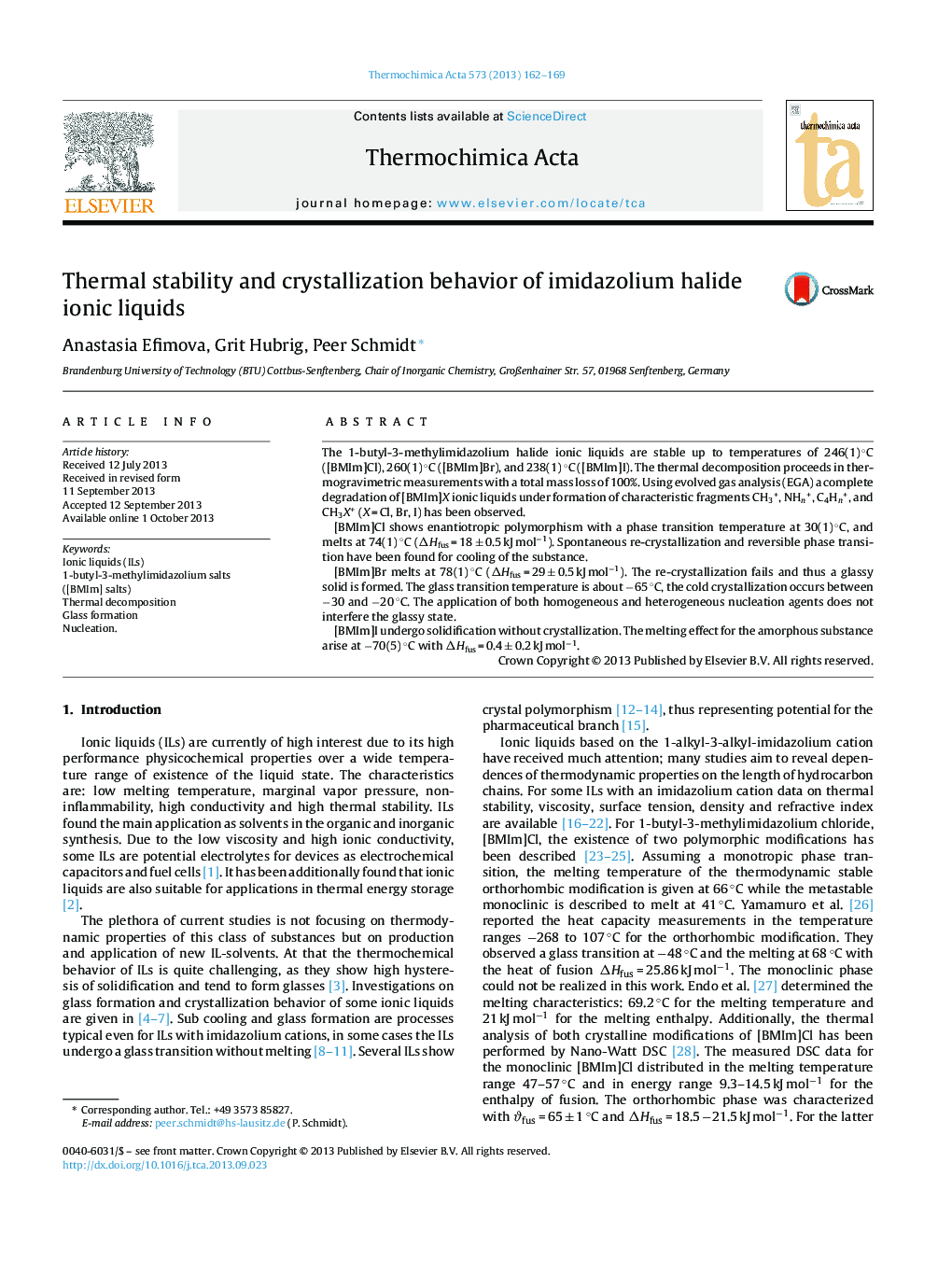| Article ID | Journal | Published Year | Pages | File Type |
|---|---|---|---|---|
| 673485 | Thermochimica Acta | 2013 | 8 Pages |
•1-Butyl-3-methylimidazolium salts ([BMIm] salts).•Thermal decomposition by TG/MS.•Solidification and crystallization behavior.•Glassy state.•Homogeneous and heterogeneous nucleation.
The 1-butyl-3-methylimidazolium halide ionic liquids are stable up to temperatures of 246(1) °C ([BMIm]Cl), 260(1) °C ([BMIm]Br), and 238(1) °C ([BMIm]I). The thermal decomposition proceeds in thermogravimetric measurements with a total mass loss of 100%. Using evolved gas analysis (EGA) a complete degradation of [BMIm]X ionic liquids under formation of characteristic fragments CH3+, NHn+, C4Hn+, and CH3X+ (X = Cl, Br, I) has been observed.[BMIm]Cl shows enantiotropic polymorphism with a phase transition temperature at 30(1) °C, and melts at 74(1) °C (ΔHfus = 18 ± 0.5 kJ mol−1). Spontaneous re-crystallization and reversible phase transition have been found for cooling of the substance.[BMIm]Br melts at 78(1) °C (ΔHfus = 29 ± 0.5 kJ mol−1). The re-crystallization fails and thus a glassy solid is formed. The glass transition temperature is about −65 °C, the cold crystallization occurs between −30 and −20 °C. The application of both homogeneous and heterogeneous nucleation agents does not interfere the glassy state.[BMIm]I undergo solidification without crystallization. The melting effect for the amorphous substance arise at −70(5) °C with ΔHfus = 0.4 ± 0.2 kJ mol−1.
Graphical abstractFigure optionsDownload full-size imageDownload as PowerPoint slide
